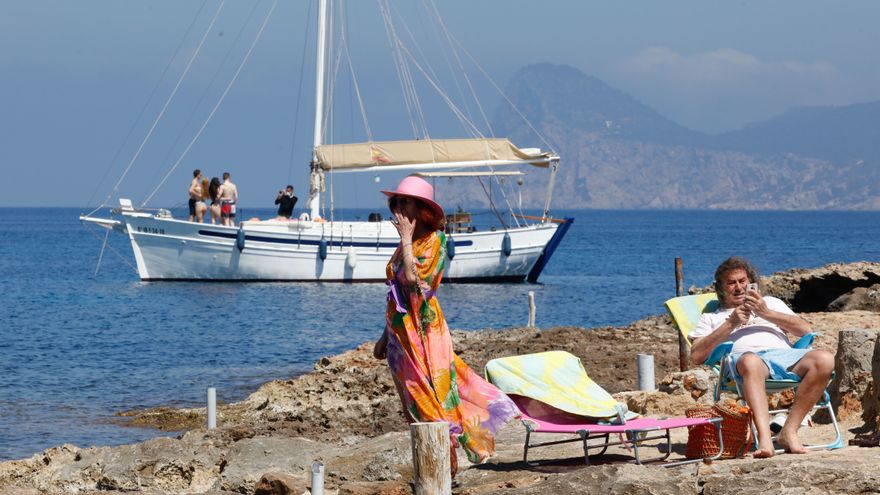Spain’s state of alert, in force since 25 October, will end at 00:00 on 9 May. Just two weeks remain. Then what? The country will enter a progressive de-escalation of restrictions, but with variations. “We will not return to total normality this year,” says epidemiologist Idelfonso Hernández, a member of the Spanish Public Health Society (Sespas). The de-escalation, Hernández anticipates, will be “heterogeneous” between the different autonomous communities because the country’s epidemiological situation is also so.
Last days of offer: enjoy your subscription to Diario de Ibiza for less than 1 euro per month
From the 9th of May the situation will be similar to the period after last year’s two-month house confinement. May 4, 2020 marked the start of what was then known as phase zero of the confinement de-escalation, which also varied from one autonomous region to another. “The transition from the state of alarm to normality will differ from one autonomous region to another. If some want to maintain restrictions that affect fundamental rights (such as, for example, the curfew), they will have to appeal to public health law. And, if there was a serious situation in any of them, they would seek the approval of a state of alarm limited to that territory“, explains Hernández.
De-escalation, he says, will be based on two vectors. “One, individual recommendations: for example, special measures for vaccinated people where the percentage of immunised people is high (the European Centre for Disease Control has given the green light for vaccinated people not to wear masks). Two, general measures or restrictions, which, as I said, will be heterogeneous because the epidemiological situation is so,” he adds.
The Basque Country, Navarre and Madrid are three of the autonomous regions currently most affected by COVID-19, while Galicia, Valencia and the Balearic Islands are the least affected. “In any case, we will have to communicate well so that people don’t think it’s all over,” says Hernández.
Regardless of the end of the state of alarm, Daniel López-Codina, researcher at the Computational Biology and Complex Systems Group (Biocomsc) of the UPC, calls for de-escalation to begin when the cumulative incidence over 14 days is “below 100”. On 4 May 2020, the cumulative 14-day incidence was 50.99 cases per 100,000 population. On Friday, the cumulative incidence in Spain was 235.51 cases per 100,000 inhabitants. “Portugal or the UK de-escalated with a much lower incidence. It would be better to go lower before de-escalating,” says López-Codina.
Although the epidemiological situation is “stable”, the number of infections per day is still very high. “Every day that goes by, vaccination helps us to make it easier. And the high temperatures will also help us”, says the Biocomsc researcher, who sees de-escalation as “good” but asks that it is done “little by little”.
These are the restrictions in force in Ibiza due to the covid as of April 24
Hernández believes that outdoor activities will be resumed first with the end of the state of alarm, which will also coincide with warmer temperatures. “We will soon see cultural activities in outdoor spaces. However, indoor venues will take longer to open; they will expand their capacity, but more slowly. It will take longer for them to return to 100%,” the epidemiologist says.
The Head of Infectious Diseases at Vall d’Hebron Hospital, Benito Almirante, believes that the education sector is one of those that has “the best chance” of resuming normal activity at the end of the state of alarm, due to the “low risk of contagion”. Also, the “commercial and cultural” sectors, which will gradually reach a level of full occupation “in mid to late June”.
In any case, “from May onwards, a progressive de-escalation should be expected”, defends Almirante, who believes that, if free movement is currently allowed within the communities (although all except Madrid and the Balearic and Canary Islands are closed perimetrically), “it makes no sense not to allow it between them”. “With the end of the state of alarm, there will be no restrictions on movement within Spain,” says Almirante.
The infectious disease specialist believes that bars and restaurants are always the “most difficult point”. He believes that, outdoors (i.e. on terraces), they should be able to open “100%”. “Indoors, capacity can be increased progressively, but everywhere should have good ventilation systems,” says Almirante. “
In addition, this year’s de-escalation takes into account something that wasn’t available a year ago: vaccines. Experts are confident that vaccines will change the situation in the short to medium term. There will be epidemiological decreases in groups which will experience no further increases.
Hernández stresses that Spain is “increasing” its rate of vaccination, with 500,000 doses a week. But this will not be over,” warns the epidemiologist. Many restrictions will be lifted, but we will still be in a pandemic and we will have to monitor new variants and outbreaks, and figure out how long the vaccines will last”.

